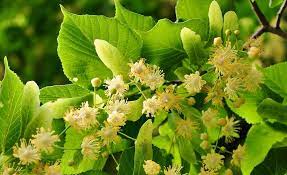
Linden is feminine, ruled by Jupiter and its
Element Water. It is said to be the tree of
immortality and is associated with conjugal love
or attraction and longevity. It is supposed to help
in preventing intoxication.

Linden is feminine, ruled by Jupiter and its
Element Water. It is said to be the tree of
immortality and is associated with conjugal love
or attraction and longevity. It is supposed to help
in preventing intoxication.
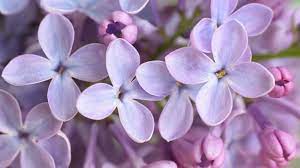
Lilac is a feminine plant that is ruled by the
planet Venus. Its Element is Air. It is a good
protector that also banishes evil and can be used
for exorcism rituals.

Lavender is a masculine plant ruled by Mercury
and the Element of Air. It is one of the most
useful herbs and can be used for healing,
promoting good wishes and sleep; it can also be
used to attract men.
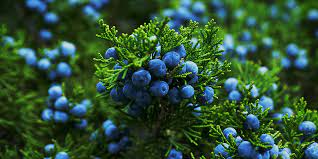
Juniper is a masculine plant, ruled by the Sun
and its Element Fire. It gives protection against
accidents, harm and theft. Once they have been
dried and worn as a charm, the berries are used
to attract lovers. Juniper also breaks hexes and
curses

Jasmine is feminine and is ruled by Jupiter and the Element Earth. It attracts men and has been
used throughout history by women for this purpose
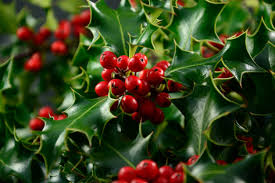
Holly is masculine and is ruled by Mars and its
Element of Fire. When planted around the home
it protects against evil. Holly water is said to
protect babies, and when thrown at wild animals
it calms them down. The leaves and berries can
be carried as an amulet by a man to heighten his
masculinity and virility, enabling him to attract a
lover.

Clover is masculine and is ruled by Mercury; it
is also associated with the Triple Goddess. Its
Element is Air. Use it in rituals for beauty, youth,
healing injuries, and helping alleviate mental
difficulties. A four-leaved clover is said to
enable one to see fairies and is considered a
general good-luck charm.
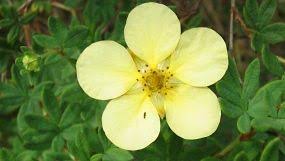
Cinquefoil is masculine and is ruled by Jupiter.
Its Element is Earth. Hang it around your doors
and windows to protect you from evil. It is used
in spells and charms for prosperity, purification
and protection.
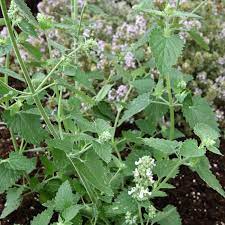
Catnip is feminine and is ruled by Venus. Its Element is Water. Its magical properties are
connected with cat magic, familiars, joy, friendship and love. As an incense it may be used to consecrate magical tools.
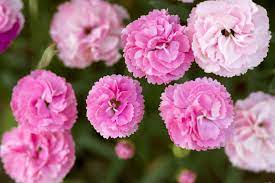
Carnation is masculine and is ruled by the Sun.
Its Element is Fire. Traditionally, it was worn by
witches for protection during times of
persecution. It adds energy and power when
used as an incense during a ritual.

Aloe is feminine and ruled by the Moon. Its
Element is Water. Its magical properties are
protection, success and peace. Aloe has always
been known for its healing qualities, for
treating wounds and maintaining healthy skin.
It helps to combat a variety of bacteria that
commonly cause infections in skin wounds.
Amaranth (cockscomb) is feminine and ruled
by Saturn. Its Element is Fire. When used
magically, it is said to repair a broken heart, so
therefore would be useful in certain love spells
and rituals. Formerly it was reputed to bestow
invisibility.
Angelica is a masculine plant ruled by Venus.
Its Element is Fire. It is particularly useful when
dealing with protection and exorcism; the root
can be carried as an amulet with the dried
leaves being burnt during exorcism rituals.
Anise is masculine and ruled by the Moon or
Jupiter. Its Element is Air. Its magical properties
are useful in protection and purification spells.
It brings awareness and joy.
Apple is feminine and ruled by Venus. Its
Element is Water. It is used most effectively in
the making of magical wands, in love spells
and good luck charms.

Seeds should be gathered as they ripen, usually in the fall. Seed Heads should be hung to dry inside a paper bag. Don’t use plastic as any condensation that gathers could lead to mildew and cause the seeds to rot. Once dry separate the seeds from their cases and store in the same manner as leaves and flowers. The easy way to dry seeds such as anise, caraway, coriander, cumin, dill and fennel is to hang the whole plant upside down inside a paper bag. The bag will catch the seeds as they dry and fall from the pods.
To dry Sunflower seeds, start by selecting sunflowers with dry stalks. Remove seeds. If plants were sprayed, wash the seeds and pat dry. Spread on cheesecloth or screening. Dry in a warm place for at least a week. An alternate method is to hang the flowers in a cool, dry place for a month or until the seeds pop out. Tie a cloth or mesh bag around the flower to catch seeds that fall. The seeds must be thoroughly dry.
To toast the seeds, measure 4 cups seeds and 1/2 cup salt into saucepan. Add water to cover. Bring to a boil; boil 5 minutes. Drain; spread on absorbent paper to dry. Place in shallow baking pan; bake at 325° F for 25-30 minutes, stirring occasionally. Cool thoroughly. Store in a dry place in an airtight container like a plastic bag or glass jar. One flower makes about 3 cups of seeds.

Geranium: These plants can provide luck and good fortune in various different ways, depending on the colour of your flower. Choose red geraniums for vitality and invigoration, pink for love, or white for fertility.
Rose: These flowers are notorious for their properties of love and friendship, and it is possible to grow miniature roses inside, or perhaps choose another Venus-ruled plant such as the maidenhair fern for the same benefits.
Impatiens: This plant, ruled by Mercury and often known as ‘busy lizzie’, does exactly what you would think it would; encourages movement and travel in your life.
Aspidistra: Ruled by Saturn, this plant encourages tranquility and homeliness, calming fears and dispelling nightmares. Another plant which achieves the same nightmare-warding effects is the cyclamen, often used throughout history to protect against evil spirits.
Thistle: A vase of thistles is thought to restore strength and vitality to those who are feeling down or depressed and have been used to ward off thieves.
Yellow plants: Arrange two yellow or orange plants, full of the Sun’s vibrant energy in front of two mirrors so they reflect the energy into your room, dispelling evil and encouraging good. This simple flower magic can be performed with any planetary influences depending on your intention
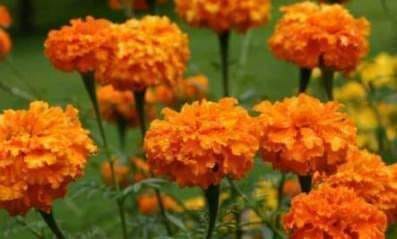
Marigolds are herbaceous plants, some perennial, some annual, of the Asteraceae family, the blooms made up of many tiny florets. They are native to North and South America but are popular garden plants throughout the world. Some of the more popular cultivated varieties are Mexican Marigold Tagetes erecta and French Marigold Tagetes patula.
History and Folklore
The Latin name Tagetes comes from the name Tages, an Etruscan prophet of ancient fame who taught others about divination. The common name, marigold, is from Mary’s Gold, though it was originally applied to calendula.
The marigold is an important flower in certain religious ceremonies in Nepal and is used to decorate Hindu temples in India. Marigold is considered the flower of the dead in Mexico where it is used to decorate ancestral altars for Day of the Dead celebrations. After the Spanish invasion, the Aztecs viewed the marigold flower as a symbol of the Spanish invasion and the massacre of their people and destruction of their way of life.
In the language of flowers, marigold means “pain and grief” or signifies a wish to comfort one who is grieving.
Growing Marigold
Marigold is easy to grow as an annual. There are some perennial varieties that grow well in tropical areas that can also be grown as as an annual in more temperate regions. Marigold can be grown from seed or young plants can be readily purchased at just about any nursery or the gardening section of your favorite big box store. It’s not picky about soil though they prefer it to be well-drained. Marigolds need a good sunny spot to thrive. Plant your marigolds in the spring as soon as the soil is warm and the danger of frost is past. If you keep your marigolds happy, they will bloom from spring right through to fall.
The scent of marigold is said to repel some insects and animals and chemicals released by their roots are said to repel nematodes. Because of this, it is considered an excellent companion plant for just about any other plant. However, it should not be used with legumes.
Marigold provides food for some species of butterflies and their larvae.
Healing with Marigold
The essential oil of Tagetes minuta or stinking Roger, usually sold as Tagetes oil can be used as an insect repellent and to prevent and help heal fungal and bacterial infections of the skin. It can be added to bath water or a vaporizer to help sooth coughs or added to a wash to help speed the healing of wounds, especially those that are weeping and slow to heal. A tea can be used for intestinal worms.
Tagetes oil is also used for aromatherapy to relieve tension and promote clear thinking and emotional control.
Tagetes lucida is used to in a tea to treat abdominal cramps, and in a bath to treat rheumatism, but it is also rumored to be strongly psychoactive and should be used with care.
Culinary Uses of Marigold
Tegates minuta is used as a culinary herb in South America where it is called huacatay. Tegates lucida is known as pericón or Texas tarragon is also used as a culinary herb and is used to make an anise-flavored tea in Mexico.
The petals of Tegates erecta flowers can be used in salads and to create a bright yellow dye.
Magical and Spiritual Use of Marigold
Mexican marigold resonates with the energy of the sun
Tagetes lucida has a psychoactive action and has been smoked ceremonially in combination with Nicotiana rustica when peyote was eaten and it may be drunk as a tea to promote visions.
All types of marigolds can be used as offerings to the dead and as decoration for ancestor altars.
Marigold Lore and Magic
Marigold must be taken only when the moon is in the Sign of the Virgin… And the gatherer, who must be out of deadly sin, must say three Pater Nosters and three Aves. It will give the wearer a vision of anyone who has robbed him.
Marigolds are a sturdy annual and quite familiar. They have been domesticated into a variety of sizes, some with tiny flowers, and others large and magnificent. Most have a golden color, but may range from bright yellow to deep, dark hues. The flowers may be gathered when in full bloom and hung upside down in a warm and dry place until the petals are completely dry.
They were said to relieve hiccups and the effects of being struck by lightning. No wonder they were considered magical plants. The marigold has healing properties and is used as a natural antifungal, antiseptic, and antibacterial treatment. Add the fresh flowers to salad greens and eat to promote good health and strengthen the immune system.
Make a tea by steeping the flowers and drink to solve love problems. Pour a quart of the tea into your bathwater on a Sunday to increase your popularity and admiration among peers. The seeds are sacred to Apollo and, when eaten, bring visions.
The marigold flower is rife with a variety of symbolism. To start, these flowers are called “the flower of the sun” and are representative of passion, warmth and creativity. To others, this flower is a symbol of comfort and contentment with simplicity. As a gift, marigolds may be a great expression of either warm or fiercely passionate love, or a simple way of saying that you feel happy and comfortable with the recipient. These flowers are sometimes given in themed gift baskets, but they are most commonly used in vibrant bouquets.
There are a number of different flowers commonly known as the Marigold, and when it comes to lore and magic, it can be confusing.
Common marigold (Tagetes) – Originally from South America, has been used as a source of essential oil for the perfume, and as a flavourant and food coloring in the food and tobacco industries. Tagetes is not to be confused with the genus Calendula, which goes by “marigold” in some areas.
Pot marigold (Calendula) – Flowers were used in ancient Greek, Roman, Middle Eastern and Indian cultures as a medicinal herb as well as a dye for fabrics, foods and cosmetics.
Mexican marigold (Tagetes erecta) – Dried leaves are ground into a powder then used as a tarragon substitute for flavoring soups, sauces etc. A pleasant anise-flavored tea, popular in Latin America, is brewed using the dried leaves and flowering tops. The petals are used as a condiment.
Tree marigold (Tithonia diversifolia) – Having a characteristic bitter taste, they were used to induce a fever to help fight poisoning, although not used for direct medicinal purposes.
Desert marigold (Baileya multiradiata) -A genus of three species in the aster family. Baileya species are used as food plants by the larvae of some Lepidoptera species (butterflies).
Corn marigold (Glebionis segetum) – In Crete and Greece, the leaves and the tender shoots of a variety called neromantilida (νερομαντηλίδα) are eaten raw in salads or browned in hot olive oil by the locals.
French marigold (Tagetes patula) -Medicinally, many cultures use infusions from dried leaves or florets.The whole plant is harvested when in flower and distilled for its essential oil
Marsh marigold (Caltha palustris) – As is the case with many members of the family Ranunculaceae, all parts of the plant are poisonous and can be irritant. Skin rashes and dermatitis have been reported from excessive handling of the plant.
Much of the traditional herbal lore and older magical information about the Marigold, is actually referring to the Pot Marigold or Calendula. What follows is what I have found that I am sure relates to the Common Marigold (tagates).
Marigolds are used as Visionary Herbes, and are part of the lore of Mexico. In that country it is sometimes said that they have their origin in the blood of the native peoples slain by the invading Spaniards. Marigolds are found in recipes for love divination, and it is also said that they give off bright sparks of light during a thunderstorm.
The species Tagetes lucida, known as “pericón,” is used to prepare a sweetish, anise flavored medicinal tea in Mexico, brewed using the dried leaves and flowering tops. It is also used as a culinary herb in many warm climates. Dried leaves are ground into a powder then used as a tarragon substitute for flavoring soups, sauces etc. and offered in the nursery as “Texas tarragon” or “Mexican mint marigold.”
The petals are used as a condiment. A yellow dye can be obtained from the flowers. The dried plant is burnt as an incense and to repel insects.
The marigold was regarded as the flower of the dead in pre-Hispanic Mexico, parallel to the lily in Europe, and is still widely used in the Day of the Dead celebrations to decorate ofrendas, papier mache and ceramic statues, altars, and graves of family members. This is because their scent is thought to draw back the souls of the dead.
Tagetes lucida was used by the Aztecs in their ritual incense known as Yauhtli. Aztecs used Tagete lucida both as a medicine and in rituals where they blew a powder made from the flowers on the faces of victims before the sacrifice.The plants was linked to the rain’s god Tlaloc. The plant is also used by the Huichol, mixed with a potent wild tobacco (Nicotiana rustica), for its claimed psychotropic and entheogenic effects.
Tagetes minuta, native to southern South America is a tall upright marigold plant with small flowers, and is used as a culinary herb in Peru, Ecuador, and parts of Chile and Bolivia, where it is called by the Incan term huacatay. Huacatay paste is used to make the popular potato dish called ocopa. Having both “green” and “yellow/orange” notes, the taste and odor of fresh Tagetes minuta is like a mixture of sweet basil, tarragon, mint and citrus. It is also used as a medicinal tea in some areas.
The marigold is very significant in Nepalese culture where marigold garlands are used almost in every household especially during the Tihar festival. It is always sold in the markets for daily worships and rituals.
The marigold is also widely cultivated in India and Thailand, particularly the species Tagates erecta, Tagates patula, and Tagates tenuifolia. Vast quantities of marigolds are used in garlands and decoration for weddings, festivals, and religious events.
In Ukraine, Tagetes erecta, Tagetes patula, and the signet marigold, Tagetes tenuifolia are regarded as one of the national symbols, and are often mentioned in songs, poems and tales.
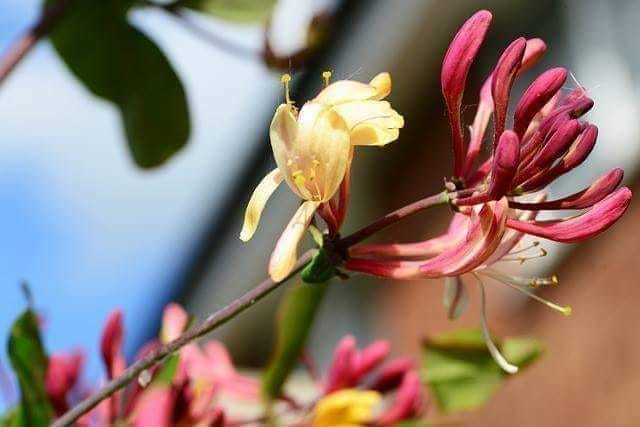
General Information
Honeysuckles are shrubs or vines with opposite oval-shaped leaves and their signature sweet-smelling tubular flowers. The flowers contain sweet nectar, but the fruit is poisonous. There are more than 100 varieties of Lonicera, about a dozen of which are used medicinally
History and Folklore
The sturdy stems of honeysuckle have been used to make rope as far back as the Bronze Age, and in parts of Britain are still commonly made into bridles and harnesses for pack ponies. In Geoffrey Chaucer’s work, ‘wodebyne’ is a symbol of steadfastness in love, and Shakespeare wrote of it in Act IV, Scene i of A Midsummer’s Nights Dream:
Sleep thou, and I will wind thee in my arms…
So doth the woodbine the sweet honeysuckle
Gently entwist;
The name honeysuckle comes from the tradition of children biting off the ends of the flowers to enjoy the drops of nectar inside.
Propagation
Most varieties of honeysuckle grow well between zones 5 and 8. Many exotic honeysuckles are considered invasive noxious weeds, so check the DNR or Department of Conservation to see what species are native to your area and consider planting those instead.
Harvesting & Storage
Because invasive honeysuckles are such a problem in many areas, it is recommended that you take care when wild-crafting to leave the native honeysuckles alone and make free with the exotic ones.
Varieties
Japanese Honeysuckle L. japonica is a vine with white flowers, sometimes tinted purple that change to yellow as they mature and small black fruit. It is native to Japan and was once used in the US as an ornamental ground cover and may also have been imported for its medicinal qualities. It has since escaped cultivation and is now considered an exotic weed and its sale is prohibited in some areas in some areas particularly in the Midwest United States.
Bush Honeysuckle L. tatarica L. (Tartarian), L. morrowii Gray (Marrows), L. x bella (Belle), L. maackii (Amur) Are native to Asia and Western Europe and considered to be dangerous invasive species in much of the united states. They are very pretty plants and were once popular ornamental.
Grape Honeysuckle L. reticulata A woody vine native to the United States. It is found along forest boarders and woody slopes. It is considered endangered in Kentucky and Tennessee and should not be wild-crafted there but can be cultivated in a sunny spot in sandy or loamy soil with moderate moisture. Tubular yellow flowers, sometimes tinged orange or pink at the tips, appear in May and June followed by red berries.
Yellow Honeysuckle L. flava
Limber Honeysuckle L. dioica
European Honeysuckle L. periclymenum also known as Woodbine
Coral Honeysuckle L. sempervirens
Common Honeysuckle L. caprifolium aka Dutch honeysuckle, Italian honeysuckle, woodbine. This is the honeysuckle most of the old European herbalists are talking about when they recommend honeysuckle for healing.
Magical Attributes
Honeysuckle is associated by Culpeper with the planet Mercury and the sign Cancer. According to other sources it is associated with the planet Venus and the element of Earth. Honeysuckle flowers may be used in spells designed to determine the true worth of a person or thing. They may be burned in a censer or steep the flowers in wine, strain and drink.
Honeysuckle flowers may also be added to a Honey Jar.
The vines of the honeysuckle plant may symbolically twined together to bind two lovers to ensure fidelity and desire for each other.
Create a wreath of the flowering vines to encircle a money-drawing candle to increase its effectiveness. Or burn honeysuckle to support any money drawing spell.
Honeysuckle brought into a home will help ensure a good marriage for the people who live there.
Grow honeysuckle near your home to attract love, luck and wealth and to protect your garden from negative influences.
The scent of honeysuckle is said to clear the mind, stimulate psychic powers, sharpen intuition, encourage psychic dreams, sweeten any mood and stimulate generosity. A flower rubbed on the forehead is said to increase psychic abilities.
Healing Attributes
Common Honeysuckle L. periclymenum has traditionally been used for coughs, asthma and other respiratory complaints, as well as a diuretic and laxative, although its use is uncommon in modern herbalism due to the toxicity of the plant.
Japanese honeysuckle L. japonica is antibacterial and used to treat a number of infections and inflammations. An infusion of the stems may be used to clean minor abrasions to prevent infections or a poultice may be used to treat skin infections, inflammations and rashes such as those caused by contact dermatitis.
++Caution
Despite honeysuckles traditional medicinal uses and sweet reputation, some people have been known to develop contact dermatitis from handling the plant. Taken internally in large doses, the plant is emetic and toxic.
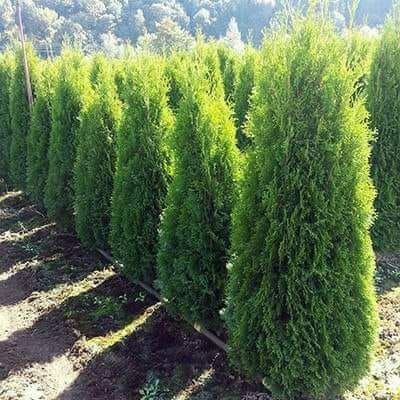
Cedar Wood Magic Properties
Element of Fire and Earth.
Planetary Associations: Sun
Zodiac Association: Leo
Associated Dieties: The Cedar wood tree is sacred to Artemis, Sezh and Persephone.
Cedar is a sacred tree of Celtic Astrology 9 February to 18 February. Cedar is associated with the goldfinch.
Druids sometimes associated this tree with the Tree of Life.
Norse peoples sometimes referred the Tree of Life to as Grandmother Cedar.
Associated with the Greek Goddess Persephone during her detainment in the Underworld.
Associated with the Celt Goddess Sezh that watches over the realm of fertility, herbs, and trees.
Used by King Solomon, one of the greatest mystics of all time, in the building of the temple in Jerusalem.
Cedar is sacred to the feast of Imbolc, also referred to by Elvish tradition the Feast of Shava.
Jewish traditions hold the Cedar tree in the highest regards. No tree is mentioned more in the Jewish Torah than the Cedar tree.
Cedar is one of the traditional nine woods used in the Druid balefire. www.teenwitch.com
Magickal Properties
Magical Properties: Cedar wands cleanse negative atmospheres. Cedar wands are available at: www.dragonoak.com
Cedar wood is used for the creation of sacred spaces.
DragonOak has found Cedar wood to be related to longevity, protection, and preservation.
Often used to summon helpful spirits during rituals and invocations.
DragonOak recommends using cedar as a symbol, charm, and talisman to represents propriety, long life, and growth.
The Cherokee believe the Cedar tree to hold powerful ancestor spirits bestowed by Ouga (Creator) in the beginning of existence.
Cedar above the entry door will drive away negative influences and evil spirits.
Cedar wood is often used to cleanse, heal, and protect.
Cedar trees can be planted to preserve sacred spots, forests, and groves.
Cedars shavings can be ritually burnt to dedicate sacred spaces.
Use Cedar wood in solar spells of all kinds that are designed to strengthen and illuminate your focus.
Cedarwood
Cedrus atlantica
Natural Clear Vision E-book
Cedrus or cedar, a genus of coniferous trees in the plant family Pinaceae, is indigenous to Lebanon, western Syria and south central Turkey. The essential oil of cedarwood is obtained from the timber of this tree by a process known as steam distillation. While cedarwood essential oil has been used for time immemorial by the indigenous people of the regions for therapeutic purposes, the earliest man used this essential oil in preserving mummies.
Similar to several other essential oils, the use of cedarwood essential oil is traced to the ancient Egyptians. Information available from ancient records reveals that the primeval Egyptians used this essential oil as embalming or preservative oil. In addition they also used this oil for cosmetic purposes. Since the oil is extracted from the real woody part of the cedarwood trees, it possesses a wood-like and zesty fragrance.
As mentioned earlier, cedarwood essential oil has been used for several thousand years by the ancient Romans, Greeks and Egyptians who used it for treating different medical conditions. In addition, the ancient Egyptians used the oil extensively to prepare incense. Even to this day, Buddhists in Tibet still use the essential oil obtained from the timber of cedarwood trees to prepare incense that is used during ceremonies. On the other hand, the primeval Egyptians especially used this essential oil to preserve mummies. In fact, cedarwood essential oil formed a very important part of the entire mummification process.
While cedarwood essential oil possesses several therapeutic properties, it is usually used as a tranquilizer for its sedative effect. In addition, this superb oil is also an extremely helpful substance that is commonly used in products meant for skincare. Cedarwood essential oil is generally incorporated in products meant for aromatherapy for the oil’s aptitude to provide relaxation and relieve stress. Use of this essential oil is suggested in combinations with other oils in aromatherapy diffusers since applying the oil in this process also yields the same benefits.
Apart from being useful in alleviating stress and strain, cedarwood essential oil is also a stimulant and its tonic properties facilitate tautening and toning up the body muscles, together with the stomach muscles. This oil has other therapeutic properties too. While it helps to enhance the functioning of the brain, it also tones up the skin. At the same time, cedarwood essential oil augments the metabolic activities of the body, thereby aiding in weight loss and regulating the body weight of an individual.
As cedarwood essential oil possesses antiseptic and antispasmodic properties, it is effective in treating a number of ailments. This oil may be used topically on wounds to clean the injuries as well as avoid contagions, such as tetanus. At the same time, this essential oil may also be used internally in very low concentrations to treat as well as keep off a number of ailments. When cedarwood oil is used in an aromatherapy diffuser, a compress or even in the air, it has the aptitude to lessen coughing. Furthermore, this essential oil is also useful in treating different problems related to the digestive tract.
Cedarwood oil is also an excellent expectorant (a medication or substance that helps in discharging phlegm or other fluids from the respiratory tract) and, therefore, it may be used instead of the traditional expectorant medications containing chemicals to cure cough and respiratory tract congestion that are associated with conditions, such as flu, colds and allergies. In addition, cedarwood oil is also effective in treating symptoms like headache, runny nose and itchy, red or watery eyes.
In fact, when people suffering from allergy, flu and cold use this essential oil they fall asleep quickly and rest more profoundly. This action of the oil is attributed to the sedative property of cedarwood essential oil.
As aforesaid, cedarwood essential oil is a potent emmenagogue and, hence, beneficial for women. In other words, this oil stimulated the flow of blood in the pelvic region. If used in appropriate dosages, this oil has the aptitude to encourage menstruation and also regulate the monthly menstrual cycle when it becomes irregular. Apart from these, this oil is also helpful as it is effective in alleviating nausea, pain and exhaustion related with menstruation and pre-menstrual syndrome (PMS).
Similar to several other essential oils that are potent and have zesty fragrance, cedarwood essential oil is also an effective insect repellent. You may use this oil in an aromatherapy oil diffuser or in a vaporiser in the kitchen, garden, garage or other places in your house that are infested with insects. You will be amazed to see how fast the aroma of this oil drives away insects, flies and mosquitoes. If you want to use this oil to keep places that are comparatively less infested by insects clear, add a few drops of cedarwood essential oil in three or four cotton balls and place them in different areas in the house which are somewhat infested by insects. For instance, you may place these cotton balls containing the oil on the kitchen window, corners of the basement, pantry and such other areas. In addition, both cedarwood as well as the essential oil obtained from the timber of cedarwood trees are exceptional natural repellents that help to protect the clothes from moths and carpet moths.
In fact, the timber or wood of the cedarwood trees are known to be self-preserving and do not decay easily. As a result, this wood is utilized in several outdoor applications without requiring any treatment for durability. The natural oil present in the timber of cedarwood is said to be responsible for the self-preserving property of the wood of this tree.
As mentioned earlier, cedarwood essential oil is extracted from the timber of the tree through a process known as steam distillation. The timber of this tree also provides different qualities of chips and sawdust. The steam distillation process involves pumping steam into a chamber where cedarwood sawdust and chips are placed from before. The steam makes the oil cells in the sawdust and chips burst open and blend with it. Later, when the steam is cooled, the water and the essential oil are separated.
Cedarwood essential oil is comforting, reinforcing and also possesses a wood-like balmy scent. As a result of these characteristics of this essential oil, it is used to prepare perfumes with a view to add body and a warm tepid tone to any blend. This oil is also used as a room fragrance or potpourris owing to its pleasing warm and woody scent. Since ancient times, people have been using this oil to treat several ailments as it possesses a number of therapeutic properties. It is very potent astringent oil that is effective in protecting and nurturing oily as well as flawed skin. Cedarwood essential oil aids in fighting cellulite (lumps of fatty deposits, especially in the thighs and buttocks).
Cedarwood essential oil is extracted from the wood of Atleas cedar wood (botanical name Cedrus atlantica) and produces an incredible comforting effect on the body as well as the mind. This oil possesses astringent properties and hence is capable of curing toothache and even has the aptitude to tauten the gums around the teeth. The astringent property of cedarwood essential oil also helps to provide the muscles with the suppleness of a youth. In addition, this oil also tones up the skin by tightening the pores of the skin. This action of cedarwood essential oil protects the skin pores from letting in dust or any harmful microbes into the body. Cedarwood oil is especially effective for tightening the facial skin and giving it a youthful appearance.
Cedarwood essential oil is also anti-sebhorroeic – an extraordinary property that is not present in most essential oils. The anti-sebhorroeic property of this essential oil aids in getting rid of the horrific skin ailment known as seborrhoea. In fact, seborrhoea (an extreme and anomalous discharge from the sebaceous glands) is basically caused owing to the failure of the sebaceous glands in the skin to function properly. The sebaceous glands present in the skin are responsible for oil production and need to be always kept moist as well as supple. However, when the sebaceous glands stop functioning normally, they usually become infected by various microbes. This, in turn, results in the skin becoming grey or white and it eventually peels off.
In such cases, cedarwood essential oil is used as a stimulant or moisturizer and it helps to get rid of the infections as well as normalize the functioning of the sebaceous glands. In fact, using cedarwood oil helps to eliminate seborrhoea perpetually. Since cedarwood essential oil has the ability to regulate the skin condition and tone it up, it is also effective in healing other conditions related to the skin, such as acne, dandruff and skin ailments and infections.
Cedarwood essential oil has a beneficial effect on the skin as well as the pores on it. Owing to this property of this essential oil, it forms an important ingredient in many men’s skin care products, including shaving cream and similar products. At times, cedarwood essential oil is also blended with other essential oils in skin care products for better results. Cedarwood essential oil possesses both anti-septic as well as astringent characteristics, which together provide a warm and woody fragrance that makes an incredible addition for men’s shaving products. Cedarwood essential oil is also an excellent addition to skin care products like aromatherapy bath oils, face masks and body butter.
The essential oil extracted from the timber of cedarwood trees is also used as potpourris as mentioned before, especially used as a room freshener by means of an aromatherapy oil diffuser. When the room is scented with the aroma of cedarwood oil, it will produce a comforting, peaceful and sedative effect. This is because cedarwood oil is a potent tranquilizer. Since cedarwood essential oil possesses extreme sedative properties, it is often recommended to get relief from stress and strain. In addition, using this oil also helps to unwind the muscles and provide comfort. This essential oil is particularly beneficial for people who remain tense and stressed most of the time. When such people use cedarwood essential oil blended with other essential oils in aromatherapy, it helps to provide them comfort, peace and relief from stress and strain. An aromatherapy massage with this essential oil is also effective in relaxing the muscles as well as the mind. In effect, cedarwood essential oil is especially effective in comforting and calming the stressed and nervous mind and also relieving anxiety.
Many products that meant for aromatherapy usually enclose cedarwood essential oil, particularly those products that are intended for use more during the evening, for instance, aromatherapy bath oils or body butters.
Cedarwood essential oil is an excellent remedy for inducing sleep, particularly when an individual suffers from sleeplessness or insomnia due to stress and nervous anxiety. Owing to its potent sedative property, cedarwood essential oil is generally used in aromatherapy oil diffuser to provide relief from sleeplessness or insomnia and its symptoms. Usually, cedarwood essential oil is combined with lavender oil to help provide relief from the symptoms of insomnia. It may be mentioned here that lavender oil is excellent aromatherapy oil for treating insomnia.
In addition to its various other remedial properties, the essential oil obtained from the timber of cedarwood trees is especially effective in providing a comfort and unwinding the stressed mind and body. Hence, in aromatherapy, this oil is extensively used to provide relaxation and alleviate stress and strain. Below are some of the specific benefits of using the cedarwood essential oil.
Cedarwood oil is very effective in alleviating tooth aches. In addition, regular use of this of this oil helps to protect the teeth from slackening off, as it has the aptitude to toughen the clasp of the gums on the teeth.
Cedarwood essential oil has the aptitude to invigorate the metabolic system and also tone up different physiological systems of our body. In effect, cedarwood essential oil is also used internally as a tonic to invigorate the metabolic process as well as other systems.
This wonderful oil obtained from the wood of cedarwood trees is also antiseptic and helps in protecting wounds and lesions from tetanus germs, thereby preventing them from becoming septic. In fact, the cedarwood essential oil is an important element in several herbal ointments that are meant for antiseptic use.
Cedarwood essential oil possesses anti-spasmodic properties and hence, it is effective in alleviating all types of spasms – inclusive of spasms in the muscles, heart, respiratory tract and the intestines.
In addition, cedarwood oil also possesses anti-inflammatory properties and is often recommended to treat seborrhoea – an aliment caused due to the failure of the sebaceous glands, which, in turn, caused contagion of the epidermal cells.
This oil is also diuretic and helps in increasing the outflow of urine. As using cedarwood essential oil results in frequent urination, it helps in eliminating surplus water, body fats and toxins from our body. This oil is generally recommended to treat several medical conditions, such as obesity, hypertension (high blood pressure), gout, arthritis, rheumatism and also infections in the urinary tract.
Cedarwood essential oil is also a potent astringent that helps to close the skin pores. This action of the oil protects the skin from dust and harmful microbes.
The oil obtained from the cedarwood timber is also beneficial for women. As this oil is a powerful emmenagogue (a medication or substance that increases menstrual flow), it aids in lessening the symptoms related to menstruation and, at the same time, controls the menstruation cycle.
While cedarwood essential oil possesses several remedial properties and is used to treat as well as prevent many conditions, it is used most extensively for its tranquilizing characteristic. This oil is a very powerful sedative and hence, has a soothing effect on the body as well as the mind. This oil is widely recommended to alleviate stress and treat many inflammatory conditions. As the oil is effective in providing relief from stress and strain, it has a comforting effect on our body and mind.
Cedarwood oil also possesses anti-fungal properties and is often used to treat fungal infections.
In addition, herbalists as well as other medical practitioners recommend this oil to treat diverse conditions, such as bronchitis, acne and dandruff.
Cedarwood essential oil is also used to treat diarrhea.
The oil extracted from the timber of cedarwood essential oil also possesses expectorant properties (ability to draw out phlegm and mucus) and, hence, is widely used to cure cold, cough and congestion of the respiratory tract.
Cedarwood oil provides relief from arthritis, gout and rheumatism when massaged on the throbbing joints.
This oil also induces sleep. Hence, people enduring sleeping disorders or problems may rub a few drop of cedarwood essential oil on the temples before retiring to bed. This will help to have a sound and trouble-free sleep. It is especially useful for people suffering from insomnia.
In addition, cedarwood essential oil possesses a sedative effect and produces a soothing effect when applied topically on the temples, back of the neck and behind the ears.
Apart from its remedial uses, cedarwood essential oil is also an exceptional insect repellent. If you keep a few drops of this oil in a cotton wool in a wardrobe or drawer, it will help to keep moths and all crawling insects away. In fact, since ages, people have been using cedarwood balls as a substitute for mothballs.
Since cedarwood essential oil is an excellent insect repellent, it is often used in wardrobes to keep moths away from damaging the clothes.
This oil may also be used to preserve foods. This property of cedarwood essential oil was discovered by the ancient Egyptians while using the oil to embalm mummies. In addition, this oil may also be used to preserve animal hides. However, this is a very costly option considering the costs of buying unadulterated cedarwood oil in the market.
General properties
antiseptic
balancing
detoxifying
sedative
stimulant
Blends well with
bergamot
cypress
jasmine
juniper
neroli
rosemary
General uses
acne
alopecia
anxiety
arthritis
blood purifier
bronchitis
catarrh
colds and flu
coughs
cystitis
dandruff
dermatitis
eczema
gonorrhea
gout
hysteria
inflamed kidneys
insect repellent
insomnia
irritable skin
laryngitis
leukorrhea (vaginal discharge)
lymphatic congestion
oily skin
panic
premenstrual syndrome
psoriasis
seborrhea of scalp
shock
sore throat
stress
thrush
urinary tract infections
Precaution
The most important thing that you ought to bear in mind while purchasing cedarwood essential oil is that you do not buy the adulterated oil. In addition, you ought to be aware that though this oil is beneficial for treating numerous medical conditions, using cedarwood oil in high concentrations may result in irritations. Hence, it is advisable that you use low concentrations of this valuable oil. Moreover, this essential oil should not be used during pregnancy as it is an emmenagogue (a substance that causes increased menstrual flow) or by patients who are undergoing chemotherapy for treating cancer.
Cedarwood essential oil is very potent and hence, it ought to be only used in a watered down form while applying it topically on the skin for it may cause exasperation. In addition, before you actually apply this oil over large skin areas, you should first check if the oil is suitable for you by first applying it over a small area. The best way to check whether this oil suits your skin is to apply a small drop of the oil on your skin and observe for around 24 hours if its use causes any adverse reaction, including irritation.
If you intend to use this oil internally, it is essential that you consult a physician or a homeopathic medical practitioner before doing so. In fact, this should be done before one starts using cedarwood or any other essential oil internally.
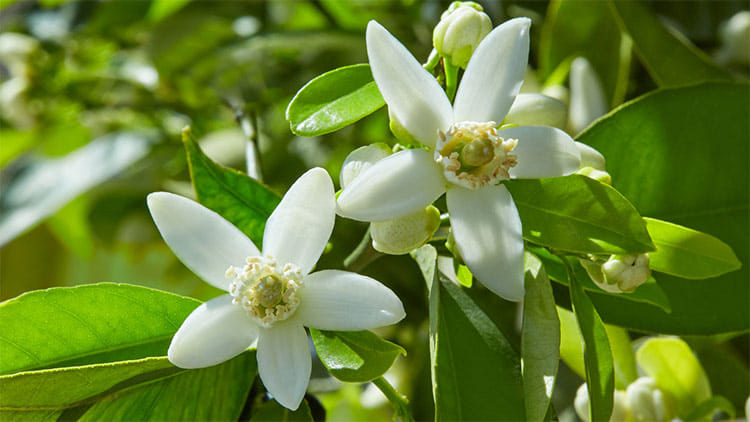
Neroli essential oil exudes an entrancing citrus aroma with slightly spicy, bittersweet undertones. The oil is rendered from the white blossoms of the bitter orange or Seville orange tree. It takes one ton of hand-picked flowers to make a scant quart of oil, so it is quite valuable and expensive in the essential oil trade and can provide for a luxurious incense experience.
Neroli oil can relieve diarrhea and comfort women who suffer from premenstrual syndrome. By stimulating cell turnover, it can prevent scarring and stretch marks on the skin. With consistent use, it can reduce the appearance of broken capillaries and varicose veins. Neroli has historically been used to dissipate acute anxiety and calm grief or hysteria when used in incense. Neroli compliments spice oils like nutmeg and clove bud and is particularly compatible with myrrh incense.
Neroli
Type: Essential Oil
Energy: N/A
Gender: N/A
Planet: Sun
Elements: Fire
Powers: Purification, Joy and Sex
Self-purification: Inhale while you visualize the scent burning away negative thought patterns, harmful habits and other misuses of your energy and mind.
Joy: Simply sniff the scent to lift up your spirits and temporarily settle emotions.
Sex: Inhale while you visualize your physical, emotional, spiritual, mental and psychic connection with the person you will be intimate with. Not an aphrodisiac, but calms the conscious mind and smoothes the path to mutual satisfaction.
Neroli essential oil is obtained from the flowers of the Seville orange trees. This essential is obtained by water distilling the orange blossoms since they are very fragile and, hence, cannot undergo the steam distillation process. The aroma of neroli essential oil has a lot of resemblance to bergamot. Neroli essential oil possesses a invigorating and typical, zesty fragrance with a sweet and flowery tinge. The flowers are usually collected manually during the period between late April and early May. Going by history, the late 17th century Duchess of Bracciano and Princess of Nerola in Italy, Anne Marie Orsini was the first to introduce the quintessence of the bitter orange tree as a fragrance to perfume her gloves and her bath. It is believed that ever since, the term neroli was used to denote this essence.
It may be mentioned that the neroli essential oil is considered to be among the most valuable and pricey natural oils available in the market. While this natural oil is obtained from the aromatic white flowers of the Seville orange trees, it is one of the most expensive natural oils since several tons of flowers of this species is required to obtain just one pound of the essential oil. This essential oil possesses numerous aromatic properties and, in aromatherapy, it is used to treat as well as prevent several medical conditions. While neroli essential oil has a relaxing and soothing impact on the nervous system, its use also facilitates alleviating conditions, such as depression and fretfulness that are associated with mental stress or tension.
Neroli essential oil is rejuvenating in every sense and, hence, it is a beneficial element in several skin care products, particularly those that are meant for treating dry skin and associated problems, such as acne, dermatitis and inflamed skin conditions. In addition, neroli essential oil is also a wonderful remedy for mature skin (skin of the elderly people), stretch marks and scars. It is known to tone up the complexion of the skin as well as soften wrinkles. Neroli essential oil also has industrial use and is often used in the manufacture of colognes, perfumes, and toilet waters. Like in the instance of most other essential oils, using a little amount of neroli essential oil will sustain for a prolonged period. This natural oil obtained from the blossoms of the bitter orange tree is not only versatile in use and utility, but also blends easily with almost all other essential oils.
As aforementioned, neroli essential oil is obtained from the flowers of the bitter orange tree and is considered to be very pricey natural oil. The blossoms of the bitter orange tree are petite, whitish and highly scented. It also needs to be mentioned again that neroli essential oil is not obtained through steam distillation, but by a method known as solvent distillation using water. This is primarily owing to the fact that the blossoms of the bitter orange trees are very fragile and cannot endure steam distillation.
The essential oil extracted from the blossoms of the bitter orange trees possesses several therapeutic properties and, hence, is used to treat a number of conditions or physical and mental disorders. This natural oil possesses sedative as well as stimulant properties that are beneficial for the nervous system. It can be used to treat most of the problems related to stress and tension having an emotional origin. In addition, neroli essential oil is widely used to treat conditions, such as heart palpitations, diminish nervous anxiety and cure insomnia or sleeplessness. Deep inhaling of the aroma of neroli essential oil as well as massaging a few drops of this natural oil blended with jojoba oil on the solar plexus helps to soothe and comfort the body and the mind. The same effect is experienced when one uses this as a natural perfume or diffuses the oil in little quantities. In fact, in aromatherapy, neroli essential oil is believed to be among the most vital aromatics while treating depression and nervousness caused by tension and anxiety.
Neroli essential oil is also considered to be one of the most beneficial oil for women, especially for the skin care of elderly women. For treating mature skin, this natural oil needs to be blended with rose Otto and clary sage oils for utmost benefits. The oil’s relaxing characteristics are passed on to the cells, which are rejuvenated. In addition, use of neroli essential oil is also useful for people having sensitive skin. Most importantly, the essential oil extracted from the blossoms of the bitter orange trees has been proved to be beneficial for the female reproductive system, especially for providing relief from menstrual cramps. When using this oil for this particular therapeutic purpose, add neroli essential oil to your bath or bring down its concentration to around 10 per cent by adding it to apricot kernel oil and massage the blended oil on the abdomen. This will help to provide relief from menstrual cramps immediately.
The essential oil obtained from the flowers of the bitter orange trees possesses anti-parasitic, anti-bacterial and anti-spasmodic properties. These properties of this natural oil help it to treat intestinal problems. In order to cure intestinal disorder with neroli essential oil drop a few drops of the oil in your bath or dilute it and massage the oil on the abdomen. In addition, massaging diluted neroli essential oil on the abdomen is very useful in treating stomach problems caused by stress and mental tension.
Neroli essential oil has varied use in aromatherapy. It has been reported that the fragrance of this essential oil is effective in successfully treating conditions, such as shock and nervous depression. Use of this natural oil also helps in relaxing the body and the mind and alleviates certain conditions that may appear to be critical. Neroli essential oil is known to provide relief from several hopeless situations related to mental disorders. In aromatherapy, the essential oil extracted from the blossoms of the bitter orange trees may be used in burners and diffusers to increase the atmosphere in a room. Its use in this manner helps to bring in an air of peace and comfort.
As has been discussed earlier, neroli essential oil possesses several therapeutic properties and is, therefore, used to treat different conditions. Below is a brief account of the condition specific utilities or benefits of this natural oil that may benefit you. Just go through the list and you may find it suitable for treating some medical condition you might be enduring.
In case you are suffering from depression and nothing seems to be working to alleviate this pathetic condition, it is advisable that you try using neroli essential oil. Used in aromatherapy, this essential oil not only helps to cure depression, but also results in a happy feeling and uplifts your mood. This attribute of neroli essential oil makes its use widespread in aromatherapy.
In the instance of getting a wound or a cut and the physician not being readily available for administering an anti-tetanus injection, you may apply neroli essential oil, of course in a diluted condition, on your wounds or cut. The anti-septic and anti-bacterial properties of neroli essential oil will help to shield your wounds from becoming infected and tetanus. It has been proved that the oil obtained by solvent distillation of the blooms of the bitter orange trees is effective in healing as well as protecting wounds from getting infectious. Once you have applied this oil on your wound or cut, you can afford to visit your doctor at your leisure.
Owing to its anti-bacterial properties, neroli essential oil is very effective in eliminating bacteria – it is also known to be bactericidal. Bacteria are responsible for certain ailments and conditions, such as typhoid, cholera, food poisoning and some specific skin disorder and using this essential oil helps to cure all such diseases and conditions.
Another important characteristic of neroli essential oil is that during cold climates, its usage helps to keep one warm and does not allow him/ her to catch a cold or suffer from cough. It facilitates the body to fight against these conditions caused by infections. In addition, the oil also possesses some expectorant properties that helps in checking production of excessive mucus by the body and ensures that you breathe freely and have a sound sleep even during the winter months.
Neroli essential oil possesses the characteristics to heal wounds by forming scars on them (cicatrisant property). It has been established that this particular feature of neroli essential oil works much more effectively compared to any other anti-mark lotion or cream. In effect, neroli essential oil forms an important ingredient of several herbal anti-mark lotions or creams. Using neroli essential oil or lotions and creams containing this oil facilitates in erasing spots, blemishes and after-marks caused by boils, acne, chickenpox and other similar conditions.
Use of neroli essential oil encourages growth of new cells as well as helps to maintain the health of the existing cells in the body. In other words, using this oil on a regular basis helps one to grow bigger, more powerful and healthier.
The antiseptic property of neroli essential oil not only helps to disinfect the body, but also makes the surroundings germ free. When taken internally, the essential oil obtained from the blossoms of the bitter orange tree helps to heal various types of contagions – including those of the kidneys, colon, prostate and the urinary tracts. In addition, this oil is also effective in curing skin infections and also protects the body from all new contagions.
The aroma of neroli oil helps to shoo away all types of foul body odour. While you may chose to use this oil as a body perfume, it can also be used as room fresheners or vaporizers to clean the atmosphere of all foul odours. Doing this not only helps to make the room scented, but also sterilizes the place.
The anti-spasmodic property of neroli essential oil is effective in treating spasms and providing relief from coughs, cramps and aches due to spasms. It also helps to cure spasmodic cholera and relax the muscles alleviating pain.
At the same time, neroli essential oil obtained from the bitter orange trees is also stomachic and beneficial for all types of stomach disorders. Use of neroli essential oil encourages digestion as well as enhances appetite.
Neroli essential oil also possesses sedative properties which help it to alleviate mental disorders, such as distress, nervous anxiety, depression and anger. Using this natural oil on a regular basis helps to relax the body as well as the mind.
Many herbalists often recommend neroli essential oil to treat colitis (inflammation of the colon), neuralgia (acute spasmodic pain caused by damage to or failure of a nerve), fat-cracks and diarrhea. Moreover, use of neroli essential oil also helps in losing unwanted weight.
As mentioned earlier, neroli essential oil is highly beneficial for the skin. Topical application of this natural oil on the surface of the skin makes the skin smooth, protects it from all types of infections and helps to make it appear fresh and healthy adding glamour. Use of neroli essential oil facilitates in sustaining the appropriate amount of moisture in the skin and also balances the oils present in the skin.
The essential oil extracted from the blossoms of the bitter orange trees is responsible for maintaining the overall health of an individual. Its use ensures that the correct rate of metabolism and proper blood circulation are maintained by the body. In addition, neroli essential oil also helps to strengthen the immune system helping us to fight against various ailments.
General properties
antispasmodic
antitoxic
aphrodisiac
sedative
slightly hypnotic
tranquilizing
uplifting
Blends well with
Blends well with any essential oil but especially with citrus oils such as lemon and sweet orange
chamomile
clary sage
frankincense
geranium
patchouli
rose
sandalwood
ylang ylang
General uses
aging skin
anorexia
anxiety
broken capillaries
bulimia
childbirth
colitis
depression
diarrhea
fatigue
fear
flatulence
frigidity
grief
high blood pressure
hysteria and panic
impotence
indigestion
insomnia
nervous dyspepsia
nervous tension
oversensitivity
palpitations
rejuvenation
shock
Precaution
Neroli essential oil obtained from the aromatic flowers of the Seville orange or the bitter orange trees should never be used by patients undergoing chemotherapy for treating any type of cancer.
Planet: Sun
Elements: Fire
Powers: Purification, Joy and Sex
Self-purification: Inhale while you visualize the scent burning away negative thought patterns, harmful habits and other misuses of your energy and mind.
Joy: Simply sniff the scent to lift up your spirits and temporarily settle emotions.
Sex: Inhale while you visualize your physical, emotional, spiritual, mental and psychic connection with the person you will be intimate with. Not an aphrodisiac, but calms the conscious mind and smoothes the path to mutual satisfaction.
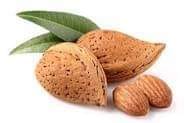
Wisdom, money, fruitfulness, and prosperity. Invokes the healing energy of the deities. Provides magickal help for overcoming dependencies & addiction. Associated with Candlemas and Beltane. Carry, wear, or use as incense to attract abundance.
Masculine.
Planet….Mercury.
Element….Air.
Deities: Attis, Mercury, Thoth, Hermes
Money, Prosperity, Wisdom. Use oil, wash, or incense to anoint magical wands or ritual candlesticks. (Almond wood makes excellent wands, especially for use in love magic). Excellent herbs for handfastings or other rituals of union. Also good for overcoming alcohol dependency. Almonds, leaves, and wood may be used in money magic. Placing almonds in your pocket will lead you to treasures.
Magical and Spiritual Considerations
Almond is a plant of masculine energy (as most nuts are) and is associated with the planet Mercury and the air element.
Almonds can be used in fertility charms worn by women to encourage the male seed to quicken within. Consider also using almond oil as an erotic massage oil for the same purpose.
Almonds and leaves can also be used in charms to draw money or luck. They should be carried in your pocket, purse or wallet (where ever you keep your money) or put in your piggy bank.
Almond flowers can be used in hand fasting rituals and love spells to encourage a lasting and loving union and also in adoption rituals.
Almond wood, flowers, nuts and leaves can also be used in rituals for overcoming addiction. Especially alcoholism.
Almond oil is an excellent carrier oil for skin care products and excellent for culinary uses as well.
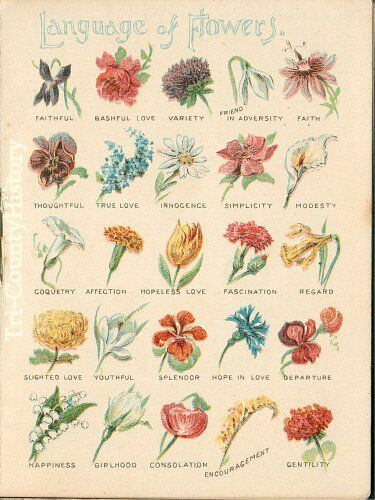
Plants are an integral key to understanding the Old Ways. Our ancestors attached symbolism to different plant part such as flowers or leaves because of what their shape resembled, or even what the nature of the environment in which they grew suggested often something of their physical nature indicated magickal power such as the sunflower always turning to face the sun, or the moon flower only opening its petals at night.
Here they symbolize many abstract principles and therefore
we find them included in the mythology of ancient Gods and
Goddesses. Other reasons for including plants as occult symbols are related to what we now term their pharmaceutical or chemical natures.
Occult symbolism appears in the act of the seed pushing its
way up through the soil. The plant grows from a seed, flower
produces seed, and dies; so too is the life of a man or woman.
The beauty of the flower is fleeting in its time; just as youth
itself soon departs and the life of the plant lives in accord with the seasons of Nature. Plants that did not die in the Winter were believed by our ancestors to have particularly strong magickal powers. For this reason, evergreen trees were themselves worshiped as deities in the ancient times of our ancestors.

Heliotrope (wishes, money, healing) Wear heliotrope oil to attract money. Burn heliotrope incense to attract money and make wishes come true.